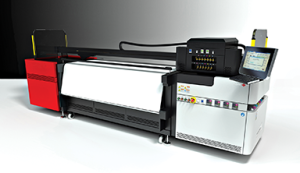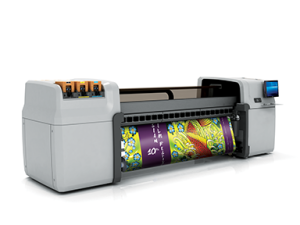Canada, for its part, has been among the markets recording the highest year-over-year increases. In Q1 of 2014, IDC reports growth in Canada’s graphic applications market segment reached 12.8 per cent. Other leading territories included Japan with 22.4 per cent and the Middle East and Africa with 18.7 per cent.
The real key to growth, however, has been to garner favour among other, less traditional user groups.

Environmental sustainability initiatives have accelerated the adoption of UV-curing inkjet printers.
“There are multiple opportunities,” explained Phuong Hang, director of IDC’s worldwide large-format printer tracker program. “Improved speeds and image quality can boost aqueous inkjet printer sales into the technical market, for instance, and latex ink-based products will also grow.”
Indeed, the technical sector now represents 60 per cent of the total large-format printer market around the world, according to IDC, compared to 40 per cent for graphic applications.
Another recent industry research report from MarketsandMarkets predicts the global large-format inkjet printer market will be worth $12.5 billion by 2016, thanks to a compound annual growth rate (CAGR) of 5.7 per cent, which the report credited to the speed, flexibility and cost-effectiveness of today’s machines. As improved piezoelectric inkjet printheads achieve higher resolutions, for example, these machines are being adopted for photographic-quality printing.
In comparison to more expensive printing technologies like dye sublimation, inkjets continue to offer a lower cost per graphic panel and the advantage of needing practically no warm-up time. Wide-format inks have also become environmentally friendlier with the mainstream acceptance of both UV-curable and latex inks, which contain few to zero volatile organic compounds (VOCs).
“Shipments of UV-curing printers have been growing steadily over the past three years,” said IDC’s Hang. “We expect this trend to continue at a similar pace over the next three years.”
The rise of three-dimensional (3-D) printing has helped bring attention to the industrial printing sector, where analogue methods—including not only screenprinting, but also gravure and flexography—continue to prevail, providing a sizeable opportunity for digital technologies to reduce overall costs and expand the range of potential applications.
The industrial use of print technologies borrowed from the graphic arts industry started many years ago. Already, there are many situations where printing is integrated into a manufacturing process to contribute to the functionality and/or esthetics of an end product.
Fibreboard decoration, for example, has long mimicked wood textures on furniture and appliances at a much lower cost than sourcing actual wood panels. The fibreboard items are covered with melamine-impregnated paper and a protective layer before being pressed together at a high temperature. The paper is typically gravure-printed with the desired texture by third parties supplying quantities of 50,000 m2 (538,196 sf) or greater.
If furniture manufacturers want shorter run lengths, however, or wish to incorporate printing into their own processes, then digital inkjet technology and UV-curable inks may make inroads in this sector. The same is true for other industrial material surfaces, including tiles, textiles and glass.
In this sense, industrial printing could follow the example of sign and display printing, where inkjet technology has already led to faster job completion and strong adhesion of inks to difficult substrates. Further, the growth of industrial printing, unlike other markets, is not determined by the demand for printed information, but instead by consumer demand for practical products and appliances—which is certainly continuing to rise.






